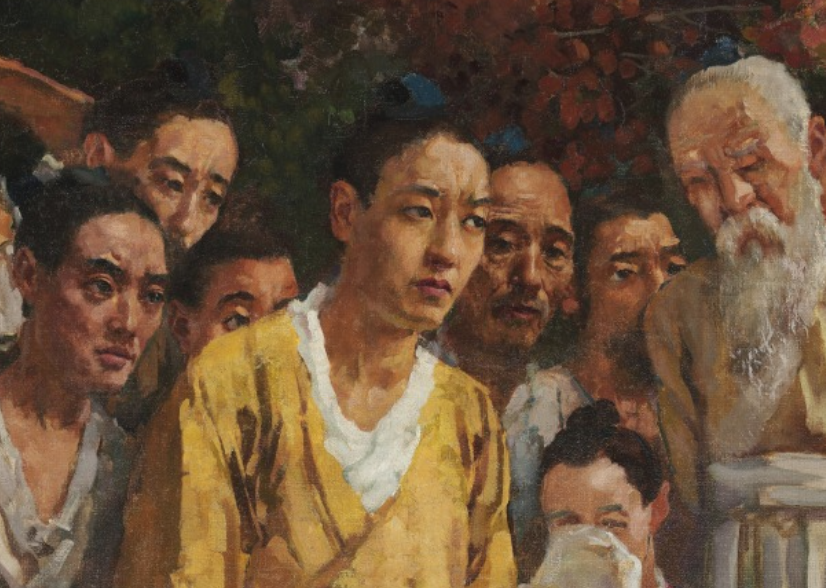田横五百士--Tian Heng and His Five Hundred Followers
Tian Heng and His Five Hundred Followers (fig. below), painted in 1930, is based on a tale from the Shiji (Historical records), a classic work of the Han dynasty. The story tells of a prince of the state of Qi named Tian Heng who fled to an island during the war between the Han and the Qin. Emperor Gaozu of Han (Liu Bang) won the war and called on Tian Heng to surrender, promising him a fiefdom if he did so and threatening to send troops to conquer the island if he refused. Tian Heng answered the emperor’s call but committed suicide on his way to the capital. On hearing the sad news, his five hundred warriors killed themselves. In the picture, Tian Heng stands at the right and bids farewell to his followers. He wears a red robe and carries a long sword; he appears bold and determined to face death. In the crowd, some sigh and grieve, while others hold their swords resolutely and roll up their sleeves to fight. Still others stretch out their arms, begging their leader not to go. Two women and a child crouch on the ground to the right. Clearly they are Tian Heng’s family.
At a bright spot in the picture stands a fair-skinned, serene-looking young man — the artist himself, dressed in ancient costume. Why did Xu Beihong place himself in the picture? The act brings to mind the French artist Eugene Delacroix, who placed himself in his July 28, 1830: Liberty Leading the People. But Delacroix painted an incident in which he took part, whereas Xu Beihong portrays an incident that took place two thousand years before he was born. By placing himself in the scene, Xu was probably expressing his admiration of the heroism of old. More than once Xu remarked that he respected the Confucian saying One must not be corrupted by wealth, must not yield integrity when poor, must not be subdued by force and might. He called this “the spirit of a real man,” and Tian Heng and His Five Hundred Followers is an indirect but forceful expression of that spirit.15 Few artists in China at this time could present such a grand view with so many characters in an oil painting.



Seems like artist himself.
text ref:
Barnhart, R. M., Yang, X., Chongzheng, N., Cahill, J., Wu, H., & Shaojun, L. (1997). Three thousand years of Chinese painting. Yale University Press. Page 329
image source:
https://blog.artron.net/space-1094561-do-blog-id-1252787.html
http://www.artpc.cn/images/image/20181115/20181115094557_22467.jpg
Dynamically Reading:
https://artsandculture.google.com/story/the-story-of-tian-heng-and-his-five-hundred-followers/hgLyXy269TwKKQ


